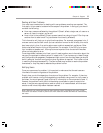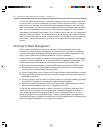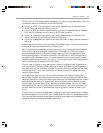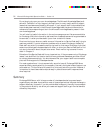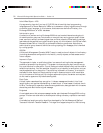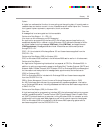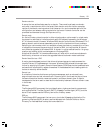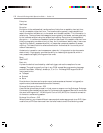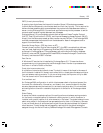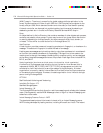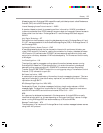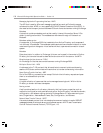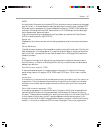
Glossary 101
Domain controller
A server that can authenticate users for a domain. There must be at least one domain
controller in each domain within the forest. Each domain controller holds a complete
replica of the domain naming context that the server is in and a complete replica of the
configuration and schema naming contexts for the forest. A domain controller can be
promoted and demoted through the Dcpromo utility.
Domain mode
An Active Directory domain can be in either mixed mode or native mode. In mixed mode,
the domain is restricted to limitations (such as 40,000 objects) imposed by the Windows
NT 4.0 domain model. However, Windows 2000 domain controllers and Windows NT 4.0
backup domain controllers can seamlessly co-exist within the domain without problems.
Switching to native mode, which is irreversible, allows the directory to scale up to millions
of objects and overcome the constraints of the earlier SAM, but requires that all domain
controllers be upgraded to Windows 2000. A domain in native mode allows for rich group
creation and nesting, which is advantageous to Exchange 2000.
Note that Windows NT 4.0 member servers can still exist within a native-mode domain.
Additionally, clients do not have to be upgraded before the domain mode is switched.
Domain Name Services – DNS
A major standards-based protocol that allows clients and servers to resolve names into
Internet Protocol (IP) addresses and vice versa. Windows 2000 extends this concept even
further by supplying a Dynamic Domain Name System (DDNS) service that enables clients
and servers to automatically register themselves in the database without needing adminis-
trators to manually define records.
Domain tree
A collection of domains that have a contiguous namespace, such as microsoft.com,
dog.microsoft.com and cat.microsoft.com. Domains within the forest that do not have
the same hierarchical domain name are located in a different domain tree. A disjoint
namespace is the term used to describe the relationship between different domain trees
in the forest.
DSAccess
The Exchange 2000 component that provides directory lookup services for components
such as Simple Mail Transfer Protocol (SMTP), Message Transfer Agent (MTA), and the
store. Client requests use the DSProxy service for directory access.
DSProxy
The Exchange 2000 component that can proxy (and refer) Messaging Application Pro-
gramming Interface (MAPI) directory service requests from Outlook clients to Active
Directory for Address Book lookup and name resolution.



